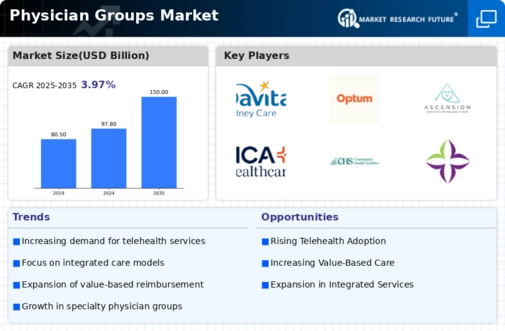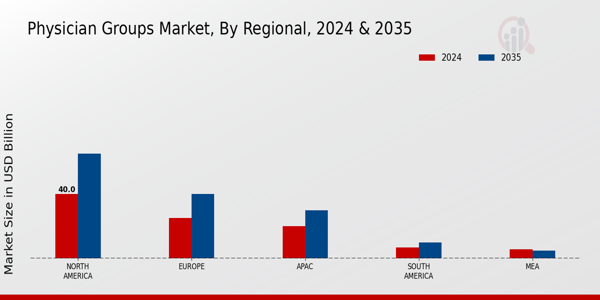The Physician Groups Market has witnessed significant transformations over recent years, driven by factors such as technological advancements, increasing patient demands, and a growing emphasis on preventive care. This market is characterized by numerous players vying for a share, creating a landscape marked by competition and innovation. Providers are continually adapting their strategic approaches to enhance patient care, optimize operational efficiencies, and respond to regulatory changes. The focus on integrated healthcare delivery models is reshaping the dynamics of the marketplace, leading to collaborations and mergers that enhance service offerings and geographical reach.
As healthcare systems evolve, understanding competitive insights becomes essential for stakeholders aiming to succeed in this ever-changing environment.DaVita Inc. has established a robust presence within the Physician Groups Market, primarily through its extensive network of outpatient dialysis centers and integrated care services. The company’s strength lies in its commitment to quality care and patient-centered services, which have positioned it as a trusted provider in the healthcare community. DaVita Inc. emphasizes clinical excellence, operational efficiency, and innovative care models that leverage advanced technologies to improve patient outcomes.
Its solid focus on value-based care is complemented by initiatives that foster collaboration among healthcare providers, ensuring that patients receive comprehensive and coordinated treatment. The company's ability to adapt to regulatory changes and industry trends supports its enduring position in the market.Optum stands out in the Physician Groups Market with its comprehensive suite of healthcare offerings, including care delivery, pharmacy care services, and health information technology. The company's strengths are apparent through its data-driven approach to improving healthcare outcomes while reducing costs.
Optum fosters a strong integration between its various services, allowing for a seamless transition of care across different patient touchpoints. This holistic approach not only enhances patient satisfaction but also delivers greater value to healthcare systems. By harnessing advanced analytics and innovative technologies, Optum has positioned itself as a leader in population health management, enhancing care efficiency and effectiveness within its physician group operations. The company's commitment to improving health outcomes while addressing the complexities of the healthcare ecosystem has solidified its competitive edge in this dynamic market.



























Leave a Comment